During the first three months of the war, the Russian military destroyed two educational buildings in the Kharkiv Region a day
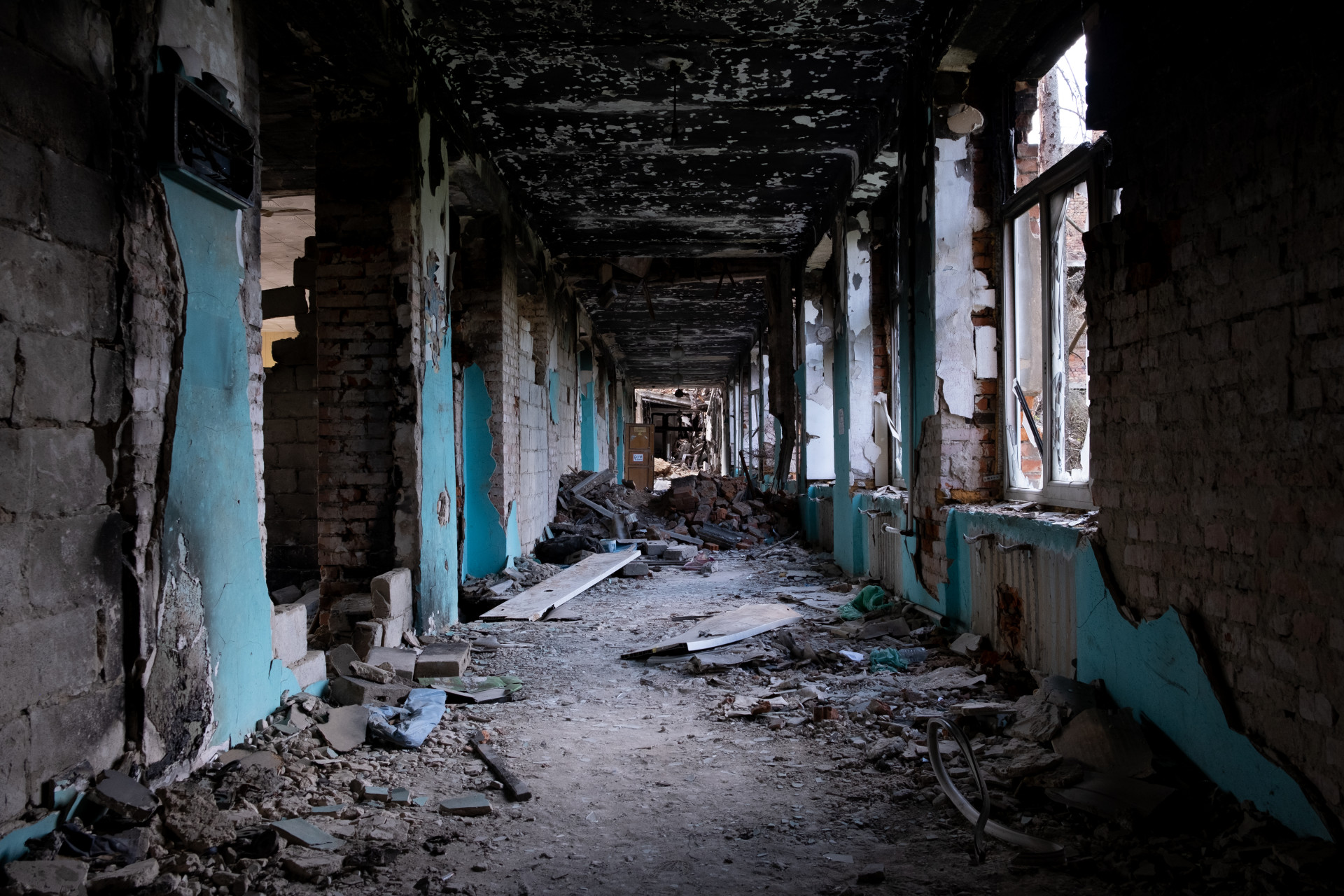
More than a year ago, children’s voices were heard in schools and kindergartens in the Kharkiv Region, and universities were bustling with active student life. The Russian Federation’s invasion resulted in the destruction and damage of a significant number of these institutions. Some will never receive pupils and students again because they have been completely destroyed. The occupiers used individual institutions to house their troops.
Previously, KHPG found that 87% of schools in Mariupol were destroyed or damaged during the aggressive Russian attack on the city. In this study, we demonstrate the consequences of the war for educational institutions in the Kharkiv Region.
In 2022, educational institutions in the Kharkiv Region were harmed by warfare so frequently that, on average, there was one destroyed school/kindergarten building or other educational facility for every day of the war. In the first three months of the war, at least two buildings of educational institutions were destroyed daily.
In total, 374 cases of damage to educational institutions in the Kharkiv Region were documented during the period from 24.02.2022 to 15.06.2023.
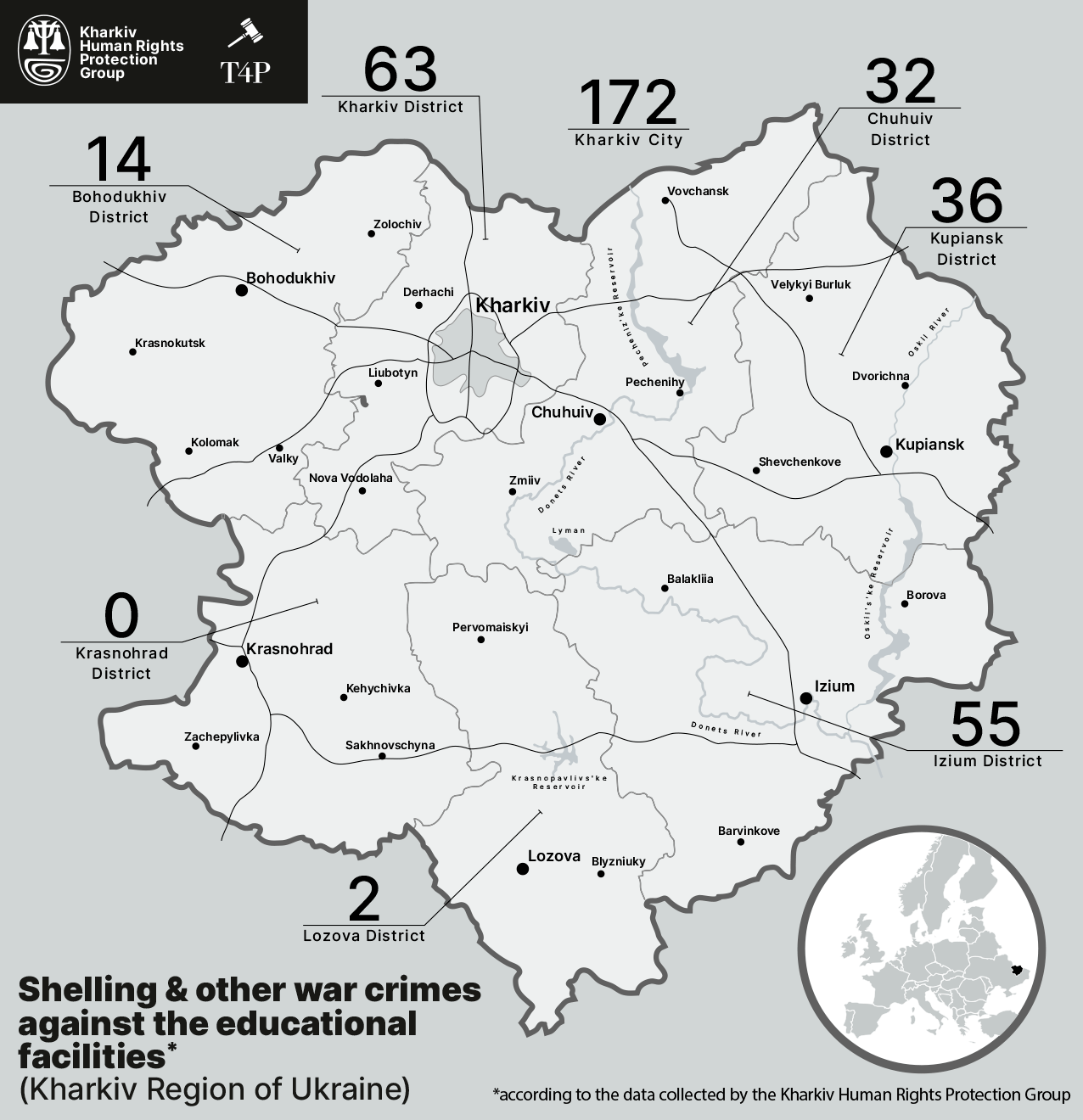
Schools
We have previously explained why schools are so often targets for the Russian army: the occupiers believe that Ukrainian forces use schools as headquarters and do not hesitate to attack them with artillery and missiles.
But some cases, when the Ukrainian troops were really stationed in educational institutions free from civilians, it can in no way justify the arbitrary and mass attacks by the Russians.
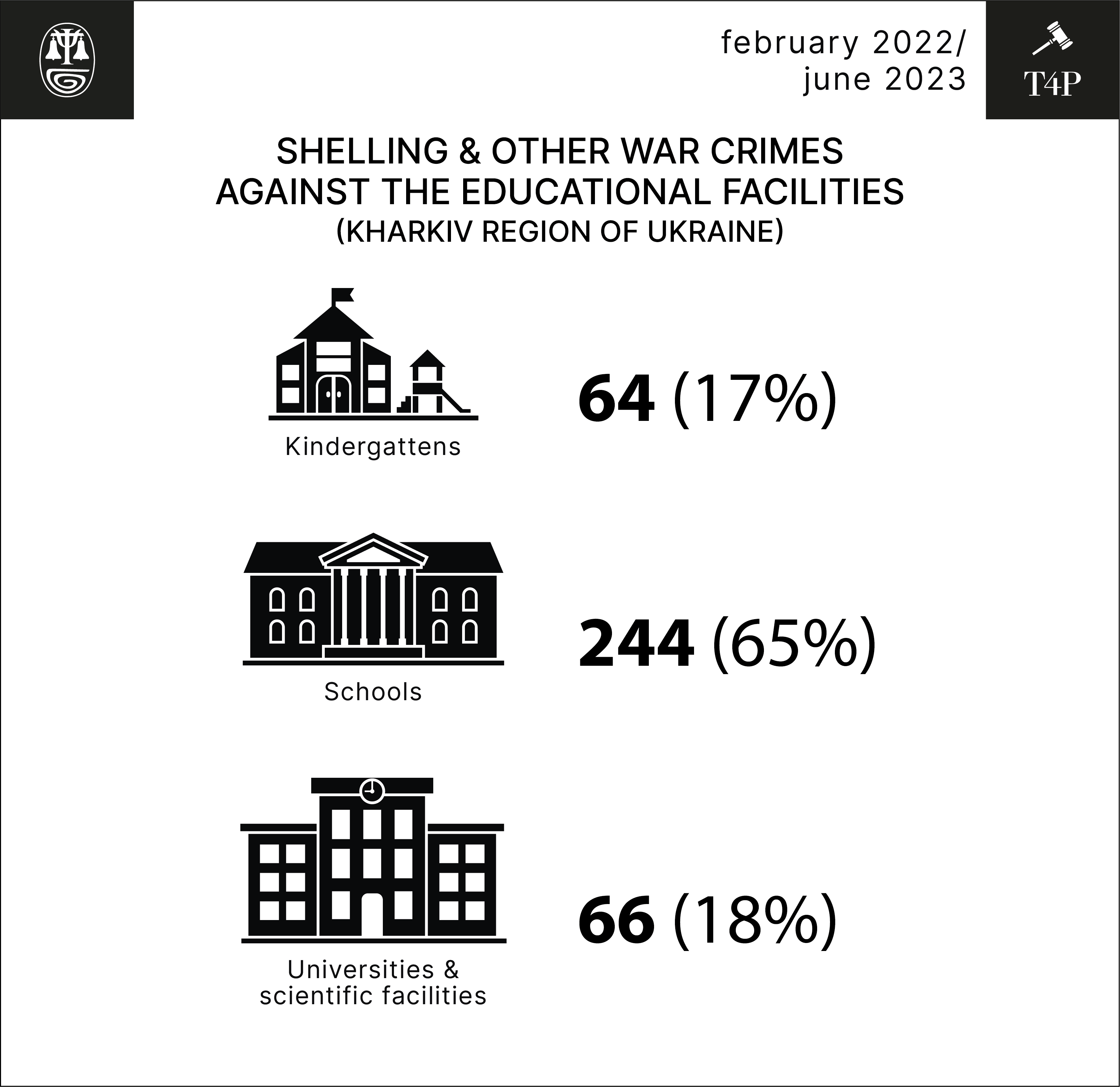
Moreover, often, the occupation troops themselves choose schools as bases. KHPG documenters found traces of the Russians’ accommodation in a school in the village of Vasilenkovo. In the school basement lay ammunition boxes, casings of fired artillery ammunition, and procurement documentation for a Russian military unit. It seems that the Russian unit’s artillery unit was located directly outside the school building, prompting a return fire from Ukrainian forces.
The school mentioned above is considered one of the oldest in the district. It was built in 1911, more than 100 years ago.
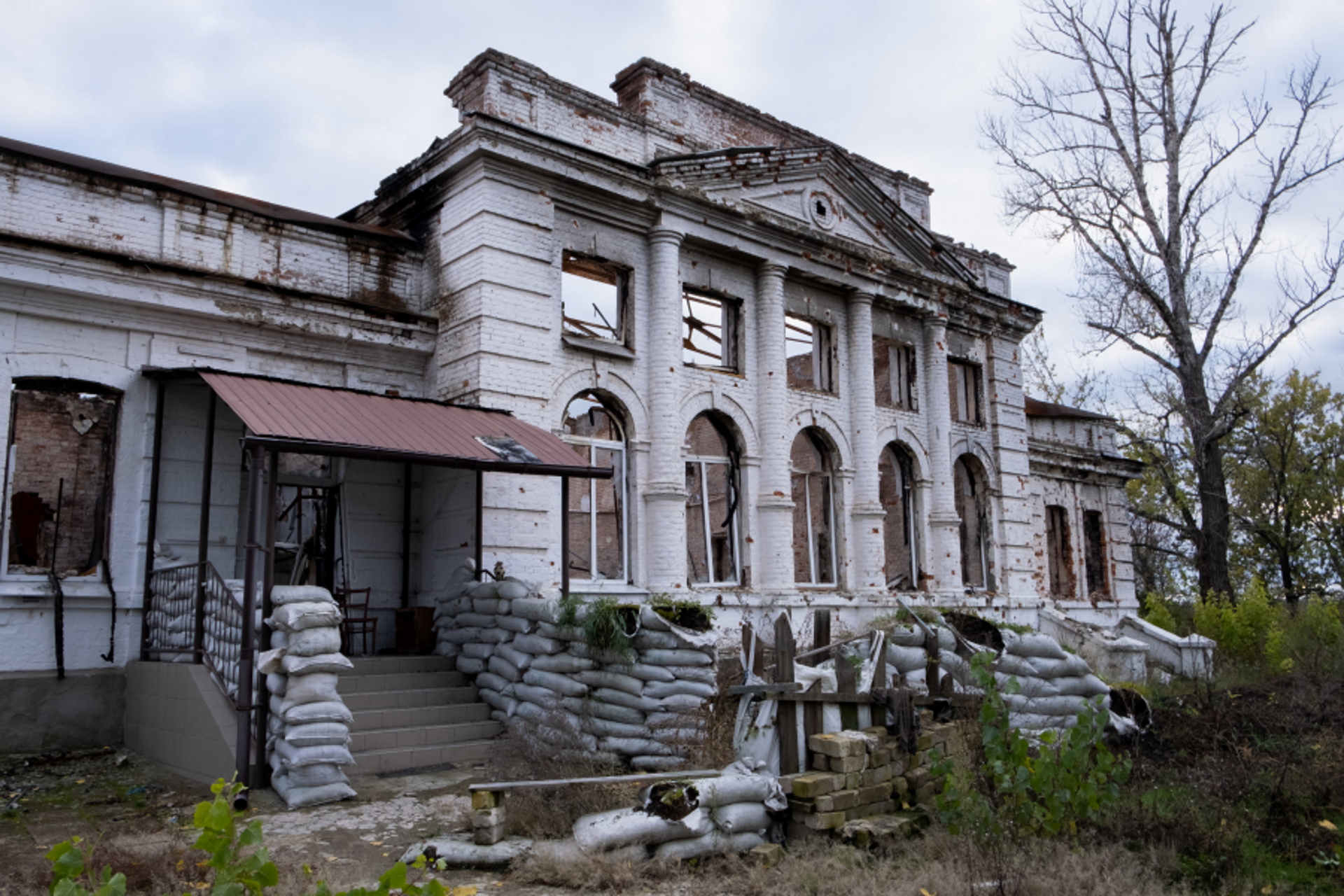
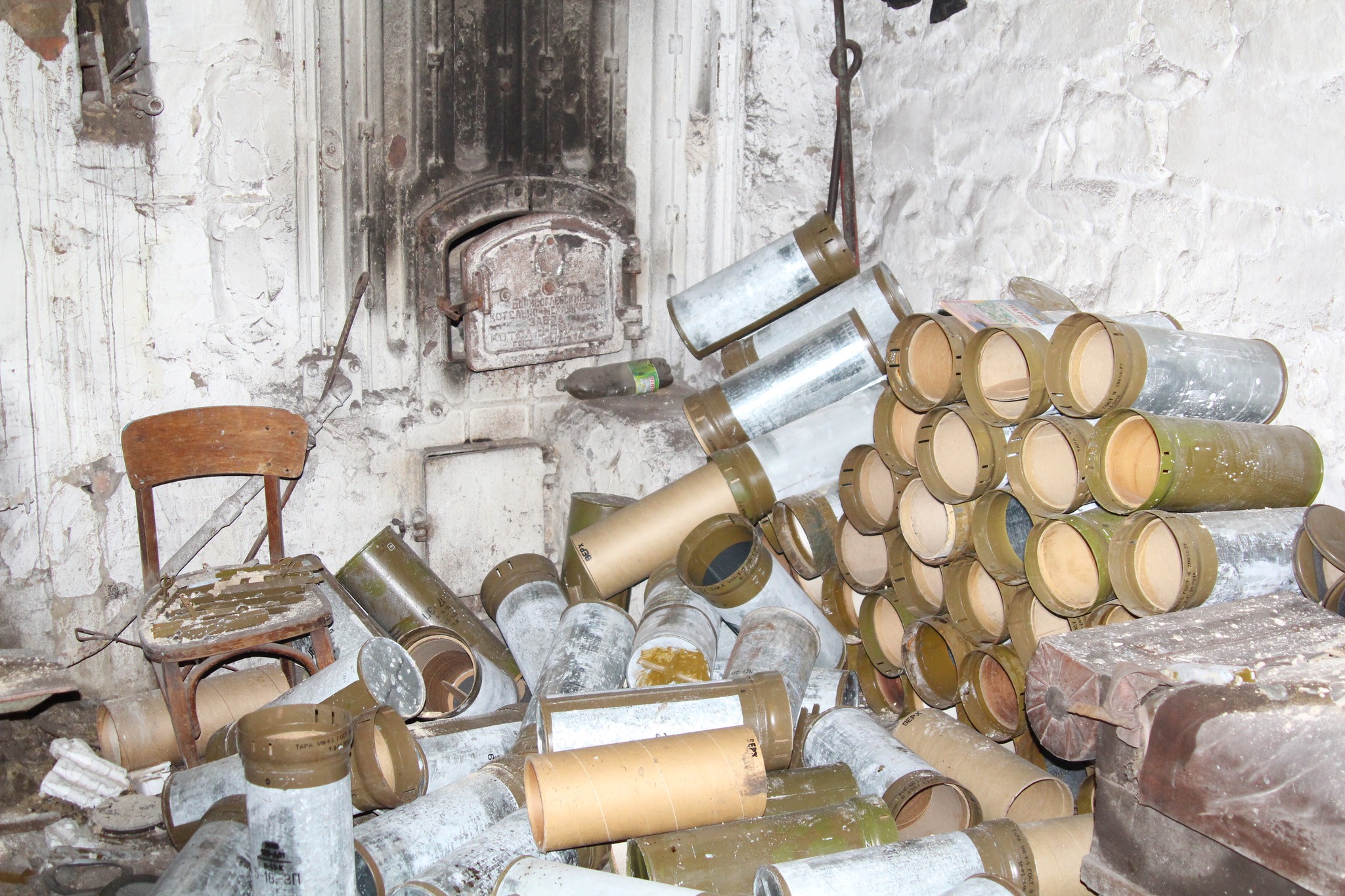
In a separate publication concerning human shields, we wrote in more detail about the use of schools as military facilities.
One of Kharkiv’s most famous fighting episodes is the Russians’ seizure of Kharkiv school No134. On 27.02.2022, a Russian military group, which seemed to belong to a special unit of the Main Intelligence Directorate, broke into the city in several Tiger armored vehicles. The Russians barricaded themselves in the premises of school No. 134 on Shevchenko Street, which is one of Kharkiv’s main thoroughfares. According to the recollections of the Ukrainian fighters who joined the battle, the Russians were well prepared both organizationally and psychologically. Therefore, the capture of the school was probably part of a special operation to take control of the key Ukrainian city.
The Russians faced intense resistance from various Ukrainian units, were surrounded, and eventually killed in the hours-long battle (except for two taken prisoner). After this episode, the Russian army managed no successful advances deep into Kharkiv, but the city remained constantly shelled.
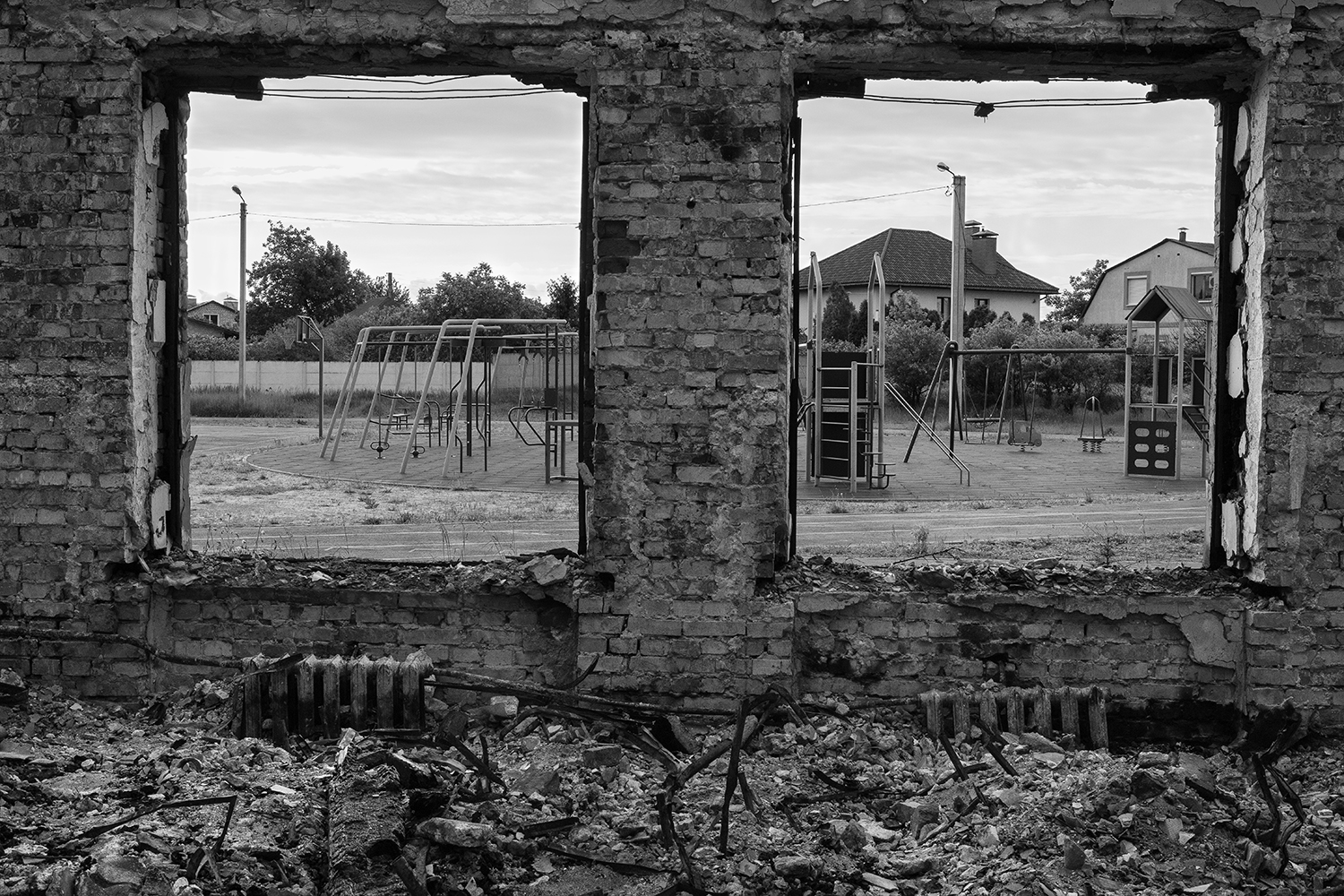
Other schools also regularly suffered due to the intense shelling. For example, in the summer of 2022, Kharkiv Gymnasium No. 46, named after M.V. Lomonosov, was hit by rockets. The main part of the school building was completely destroyed.
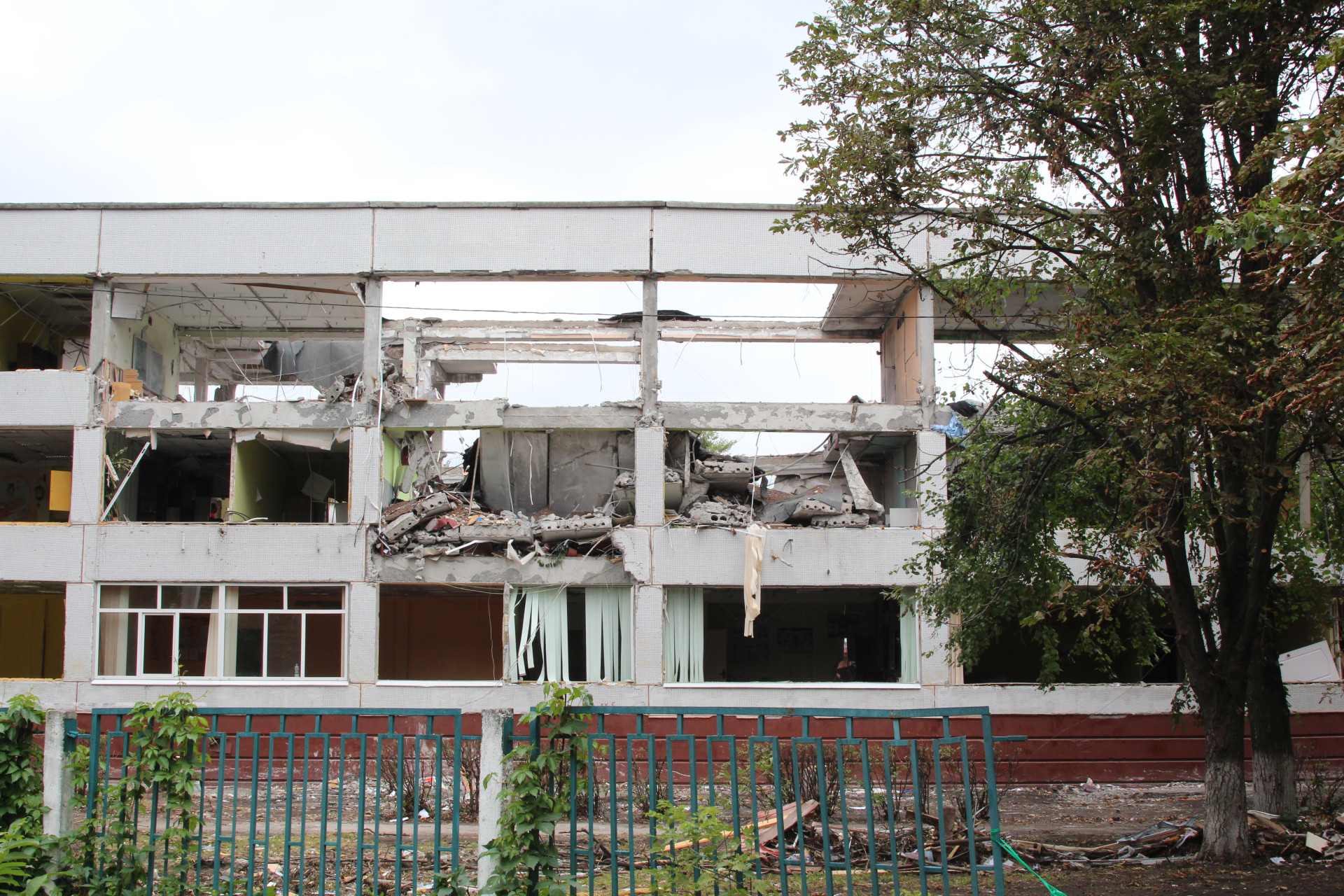
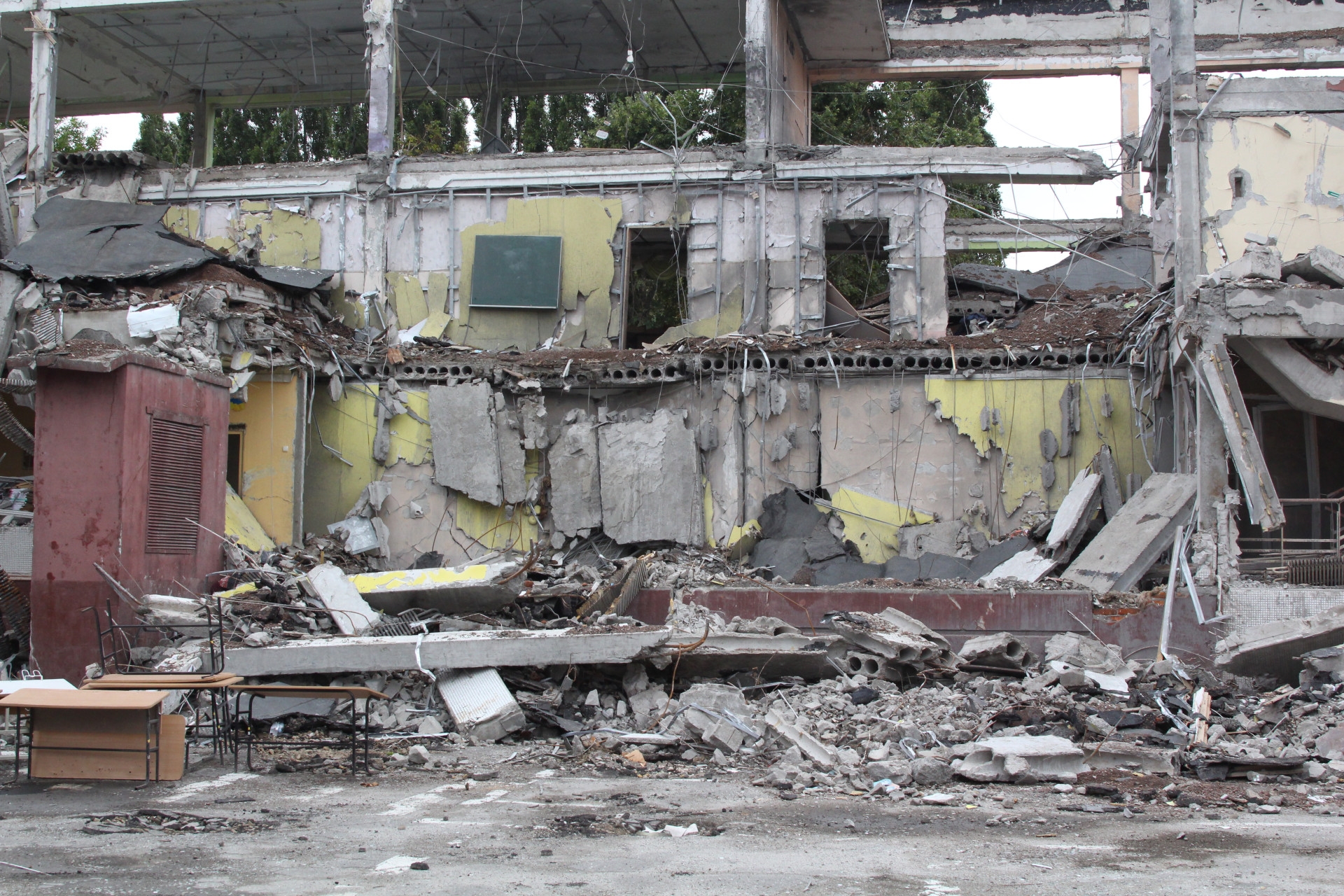
Very often, the schools of the Kharkiv Region teach children from several localities of one community (hromada). The destruction of such schools makes it much more difficult for children living in corresponding hromadas to receive basic education, which can eventually negatively impact the region’s development.
Cherkasskolozovsky Lyceum, one of two secondary education institutions in the Malodanilivka community, can be an example. As of January 1, 2020, the community had a population of 13,356. You can see what is left of this lyceum in the drone photo.
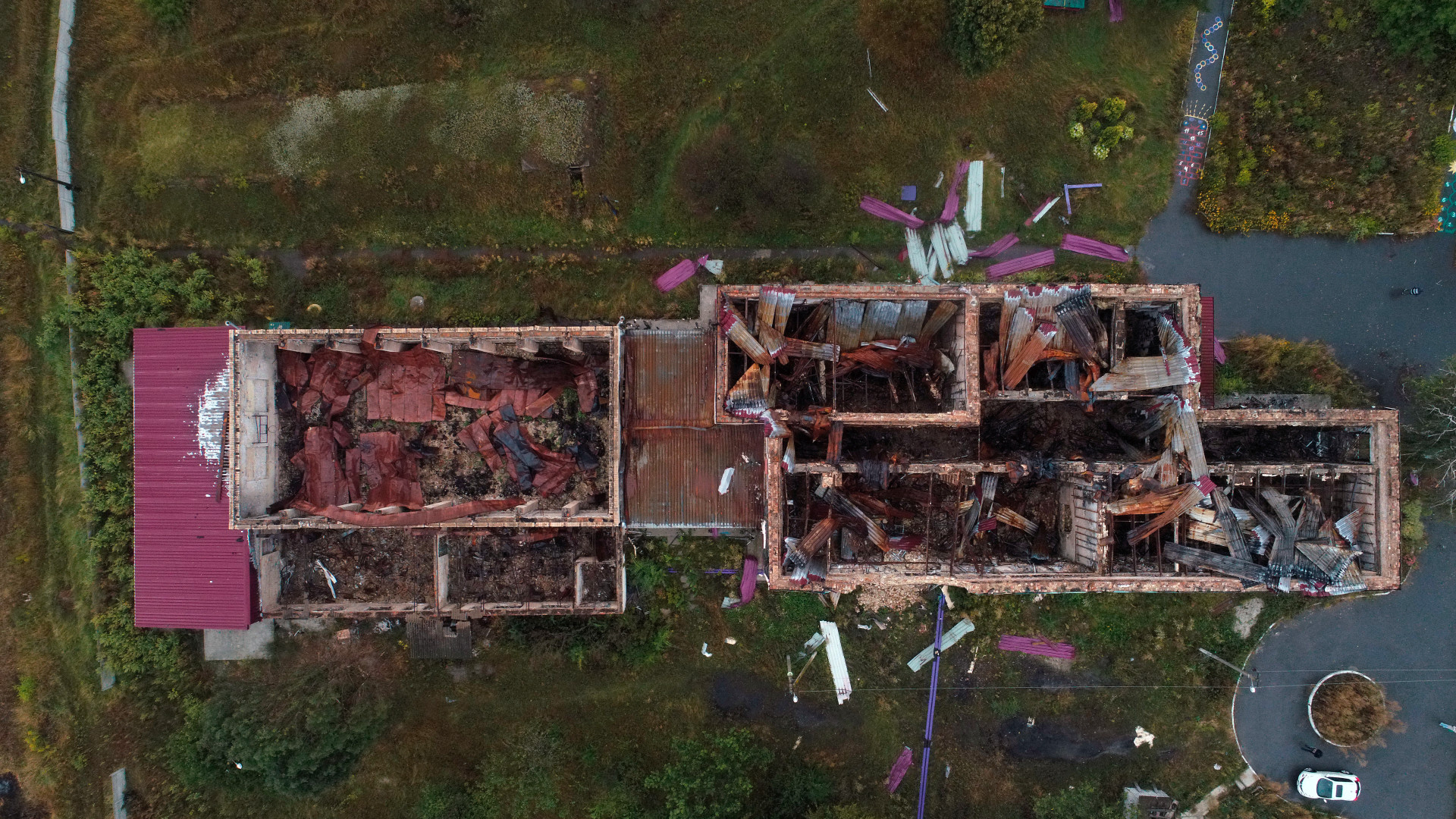
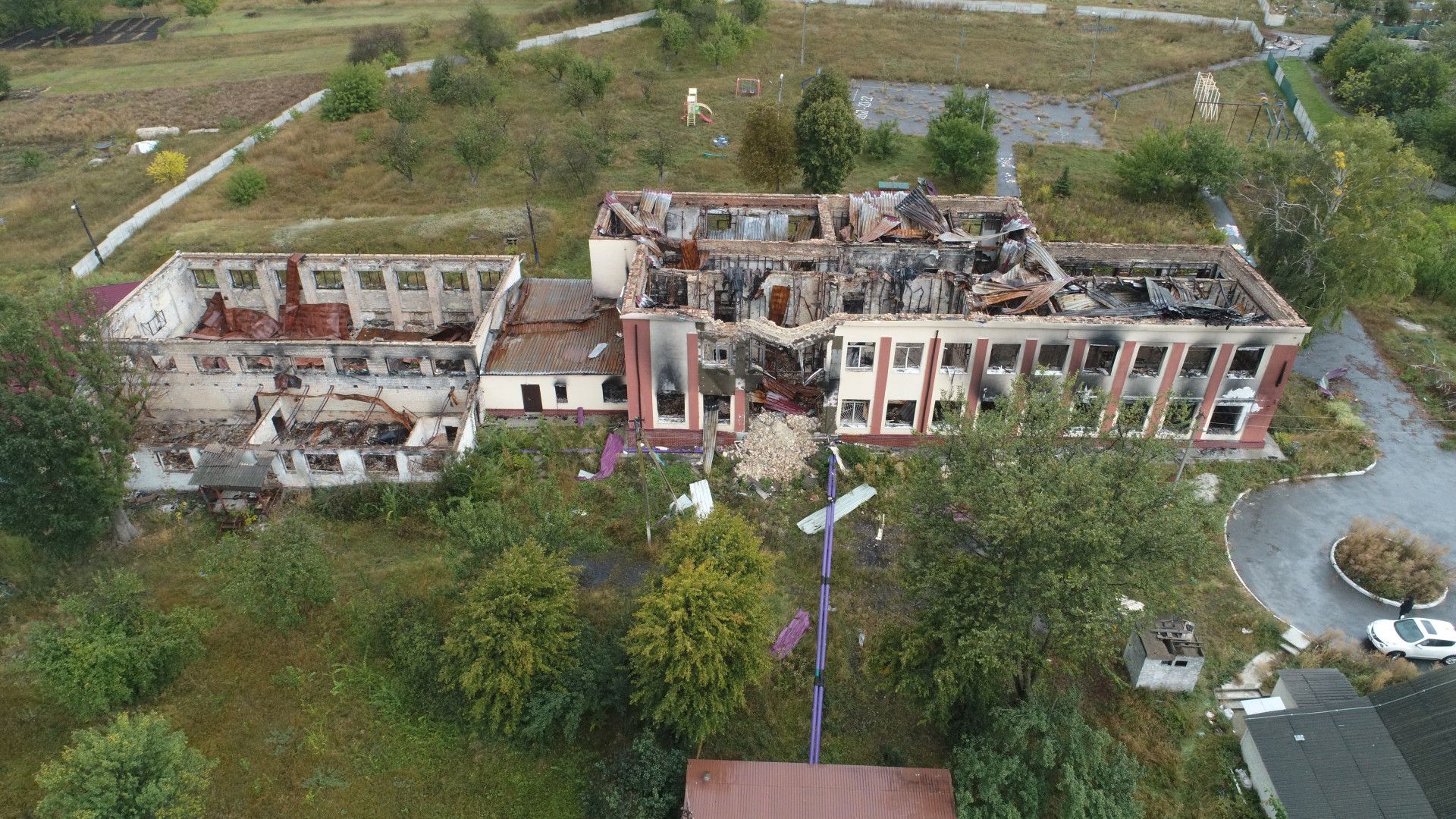
According to the USEDO (Unified State Electronic Database on Education) data, there are 818 schools in the Kharkiv Region. 30% of them were completely destroyed or damaged during the war.
Universities
Since the universities are located primarily in the regional center, which the Russians failed to capture, in all documented episodes, the university buildings suffered from shelling and rocket attacks.
On the morning of February 5, 2023, the Russian Armed Forces struck Kharkiv, damaging the building of the Beketov University of Urban Economy. This was not the first strike on this institution, but previously, its buildings did not suffer significant damage.

In March 2022, the Russian military launched a Grad MLRS strike on the Kharkiv Institute of Physics and Technology territory. This scientific center houses a nuclear research facility, “The Neutron Source”. At the time of the shelling, 37 nuclear fuel elements were loaded into the core of the facility. Throughout 2022, the facility has been repeatedly shelled by the Russian army.
Russian propaganda claimed back in early March that the Ukrainian side allegedly mined the reactor without providing any confirmation. Obviously, in case of damage to the nuclear facility, the Russians were going to blame the Ukrainians, which is their standard tactic.
The Neutron Source research facility was built with U.S. support in exchange for Ukraine giving up its store of highly enriched uranium, which, according to the agreement, was transferred to Russia. The facility was launched in October 2021, several months before the full-scale invasion.


Kharkiv Polytechnic Institute also has been repeatedly attacked. On June 22, 2022, two missiles partially destroyed the Polytechnic sports complex. Two months later, a missile hit the U4 educational building, and a campus security guard was killed.
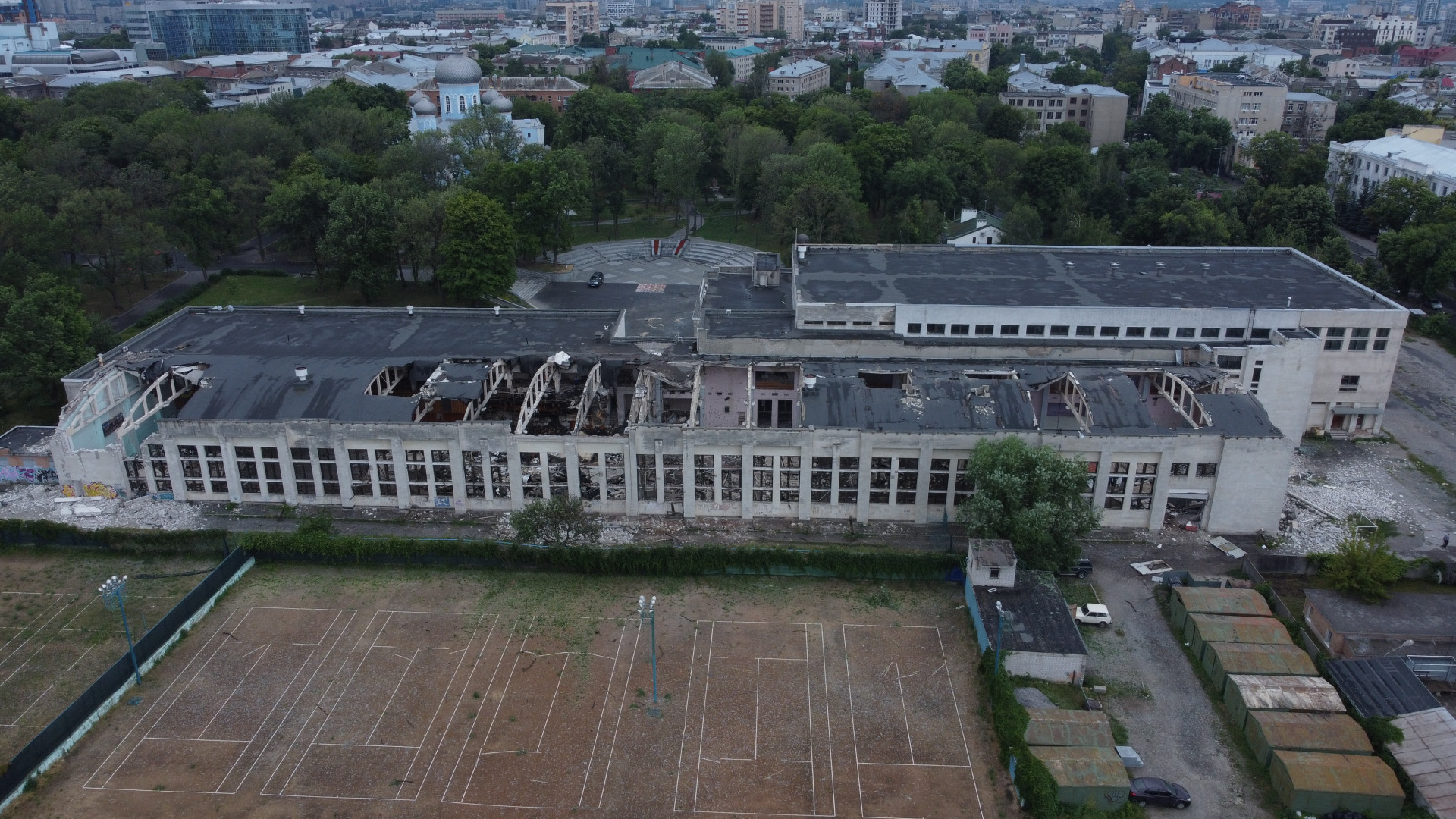
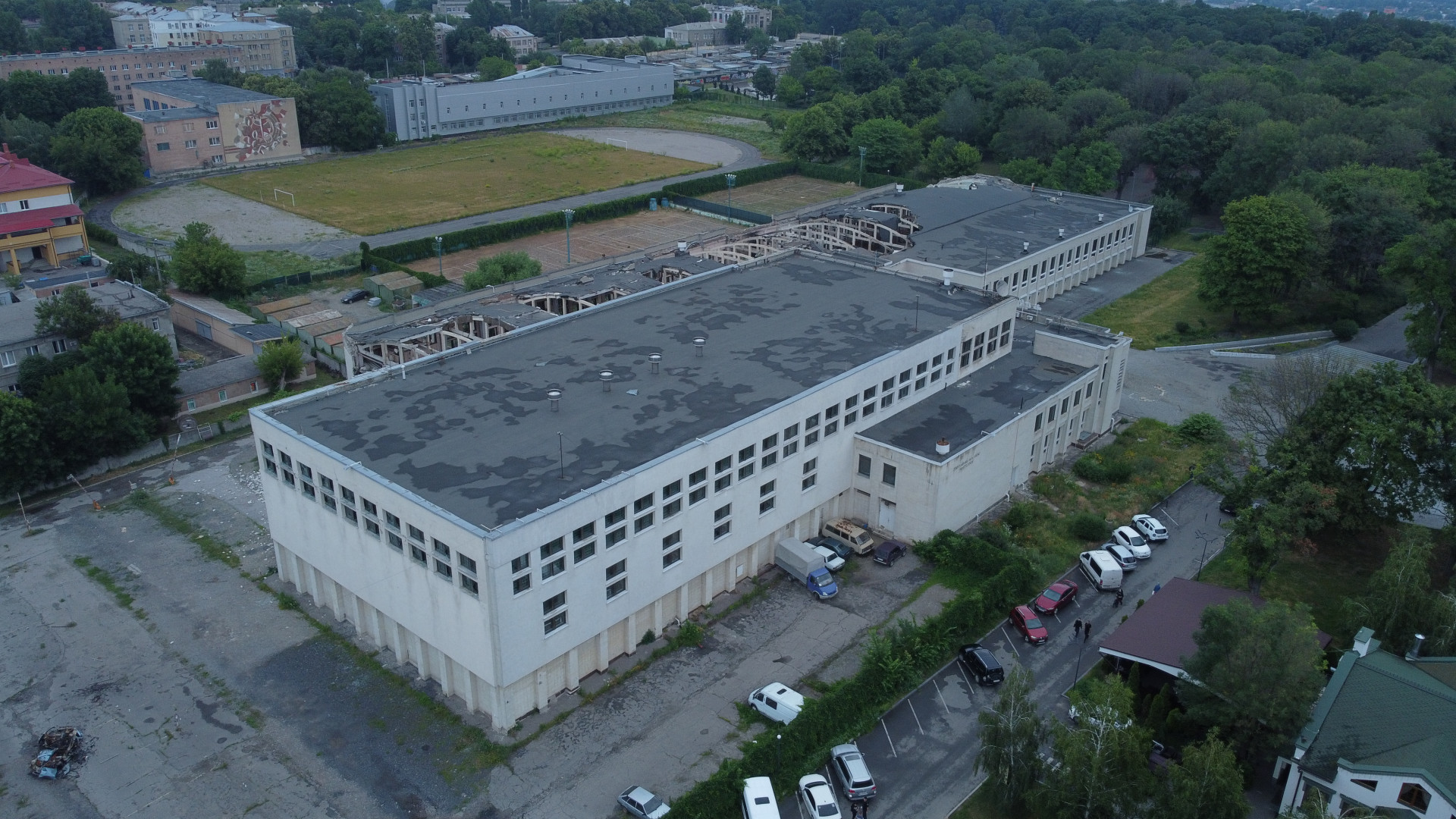
The Kharkiv State Scientific Library, named after Korolenko, was damaged due to the shelling of the city. The famous architect Alexei Beketov designed the library building, and the library worked on this premises since 1901. This building is considered an architectural landmark of the late XIX — early XX century.
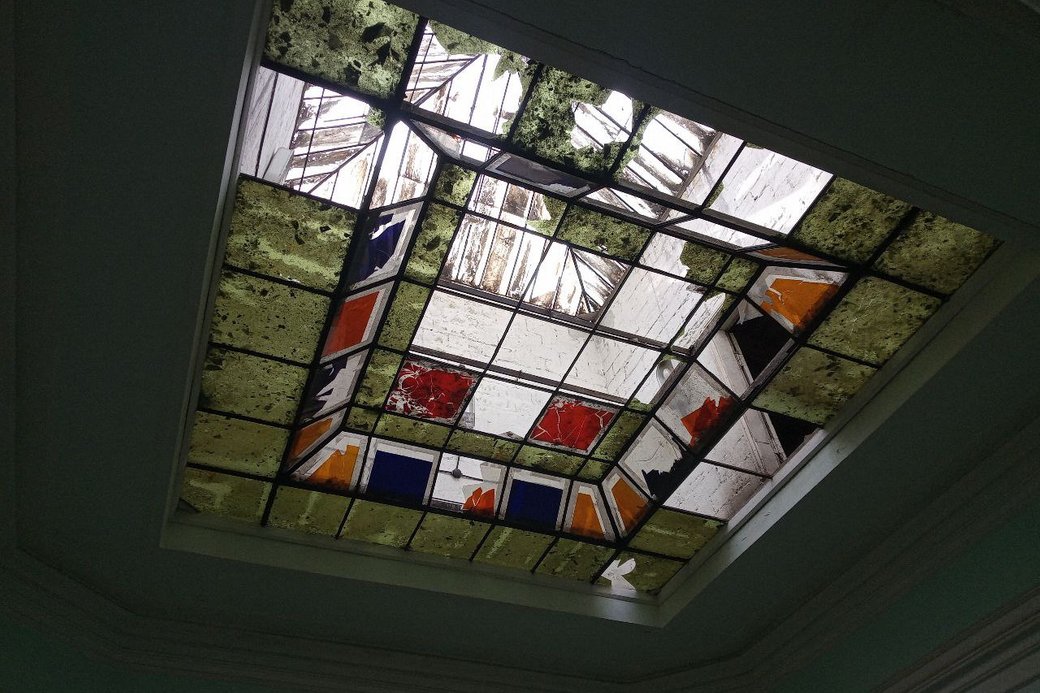
“A significant part of the windows in the entire building was destroyed, almost destroyed the light lantern over the atrium, which decorated the library roof. Also, numerous blast waves broke internal doors, and ceilings in the workrooms began to crumble due to constant shelling. The facades of the building were damaged. And the most sensitive issue — the heating system of the library was destroyed”, — commented on the damage the director of the library Natalia Petrenko.
The fundraising campaign to collect money for the restoration of the Korolenko Library continues on the Ministry of Culture’s special website.
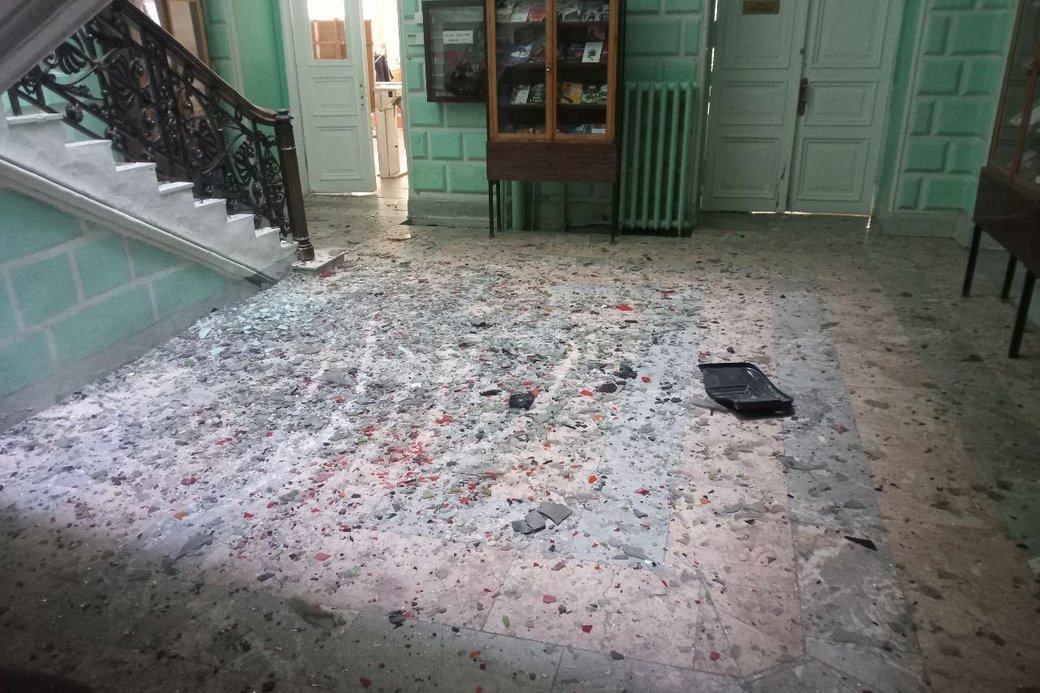
Institutions of preschool education
Similar to higher education institutions, kindergartens in the Kharkiv Region suffered from missile and air strikes by the Russian army.
Below in the photo, you can see the destruction of kindergarten No 109 in the Northern Saltovka district, the most war-torn Kharkiv neighborhood. Residential neighborhoods were regularly shelled during the occupation of the Kharkiv Region.

As in the case of schools, the destruction of kindergartens in the Kharkiv Region, in some cases, creates a significant problem for children’s development, as sometimes destroyed kindergartens are the only ones serving the entire settlement.
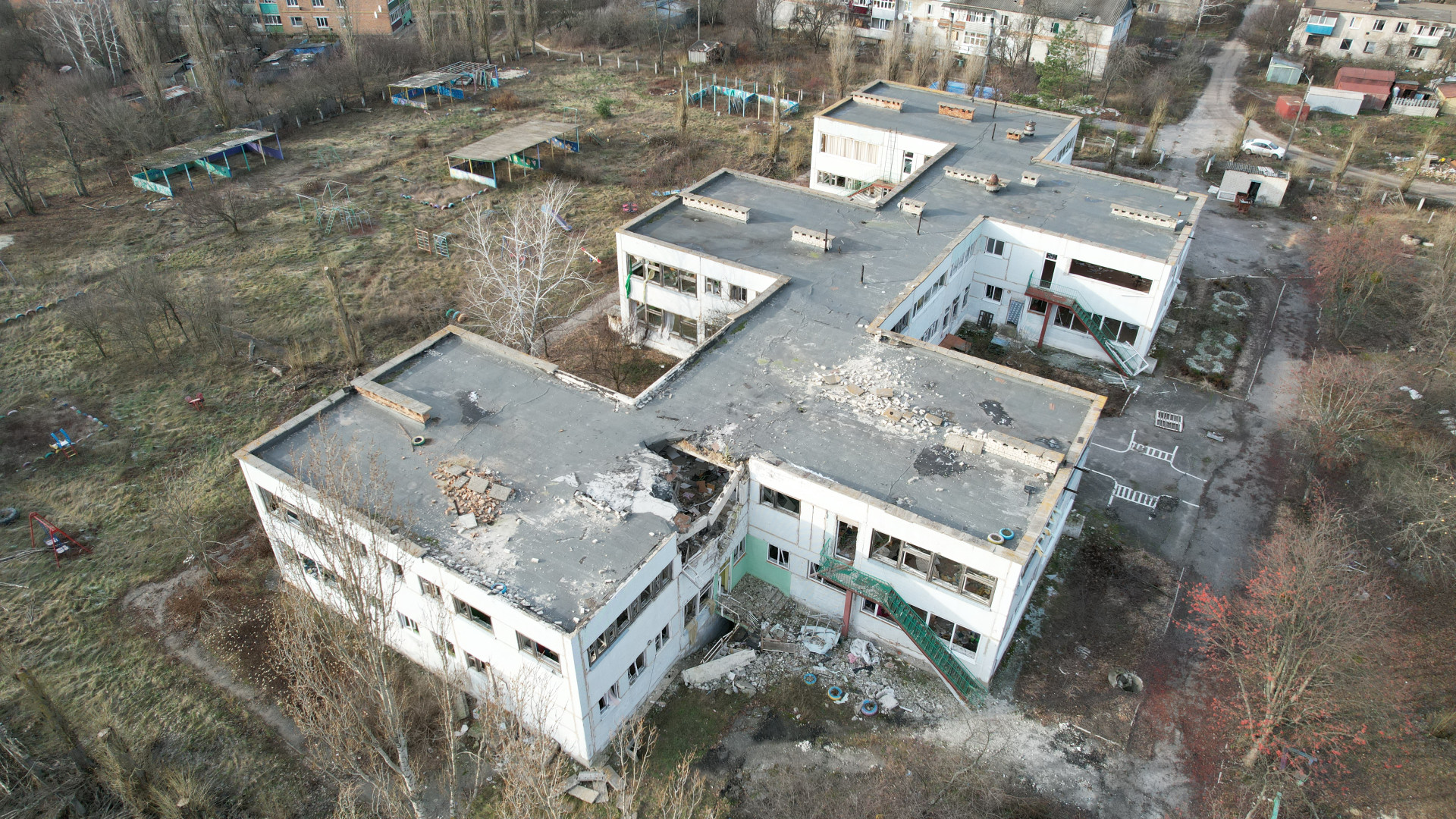
Over the past few years, Ukraine has been undergoing administrative and local government reform, which has resulted in transferring more powers to local authorities. Children’s education is a priority for villages and small towns residents, so often, local authorities have decided to invest in the reconstruction of schools and kindergartens. Such investments involved state funds and foreign donors as co-financing. Many school buildings in the Kharkiv Region were repaired and renovated shortly before the Russian invasion began.
Thus, destroying educational institutions, especially in small communities, is dealing the most painful blow to their residents. They are losing the opportunity to educate their children in a nearby school or kindergarten, the reconstruction of which may have been the largest article of expenditure for the community in the previous years.
Schools and other educational and scientific institutions are “protected” sites in international humanitarian law. Intentionally attacking such institutions, provided they were not a military target, is a war crime.
Supplements. While preparing the study, we sent a request to the Kharkiv Regional State Administration and received official data on the destruction of educational institutions in the region.
Data provided by the Kharkiv Regional State Administration as of 24.05.2023
| Destroyed |
Damaged |
|
| Kindergartens |
19 |
246 |
| Schools |
45 |
290 |
| Universities |
22 |